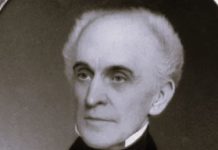The Netherlands was the North American part of the Dutch 17th-century overseas colonial empire. This Dutch influence throughout North America spanned 55 years. It began with the discovery of Henry Hudson’s river, named after him in 1609, and culminated with the English confiscation of New Amsterdam in 1664.
The elites of the commercial sector in the Dutch Republic viewed their North American presence as a commercial company, not a colonial colony. This attitude influenced the colony’s social, economic, and political growth. Dutch expansion into North America began at the highest point of the nation’s military and economic power in the early part of the 17th century.
Unfortunately, they failed, as the Dutch attempted to expand their international trade empire with violence, which led to growing competition against England as well as France, in addition to spreading them dangerously thin. The Dutch resolved the issue with the help of making their foreign assets as profitable and self-sufficient as possible.
The earliest Dutch colony settlements located on Manhattan Island and elsewhere in the Hudson River Valley were trading posts. Although the colony was able to attract more settlers, it was mostly a business venture that was devoid of permanence and social cohesion. The elite of trading who controlled the settlements were often in conflict with one another; however, while the Dutch allowed tolerance of ethnic and religious minorities in their colony, the administration was not democratic.
The Dutch West India Company appointed the colonial governor as well as an advisory council comprised of the most prominent colonists. However, it did not allow any elected assembly. Governors were generally inflexible, unjust, and, notwithstanding Petrus Stuyvesant, utterly incompetent. Dutch interactions with Native American tribes were ambivalent at best.
The Dutch authorities sought out good relations with more powerful, larger tribes due to their economic and political strength. However, they were not able to negotiate with tribes that were smaller and less powerful. This savage attitude extended to their less powerful European adversaries, the Swedes.
It was in 1655 that Stuyvesant took over a number of Swedish forts on the coast of present-day Delaware. He did not inform either the corporation or the home government of his plans. These actions did not enthuse the Dutch toward the other European state or their Native American neighbors. Over time, arrogance and greed from the Dutch leaders at New Amsterdam led to a number of wars with Native Americans between 1640 and 1664.
These wars destroyed Dutch trading settlements economically and put them at risk of being taken into the hands of the English. The business model of profit-driven Dutch business is apparent in its beginnings. Hudson was an English entrepreneur and ship captain who made his 1608–1609 travels into the New World under contract to Dutch merchants.
Starting with Hudson in the early 1800s, merchants dispatched ships to the Atlantic and along the Hudson River to trade with the indigenous people for furs. From the higher portions of the river, traders were able to communicate with distant tribes from the north. In order to use these trade routes, the Dutch required the support of the strong Iroquois Confederation. In 1614, the Dutch established a permanent station on the Upper Hudson by setting up Fort Nassau (later relocated and changed to Fort Orange, near present-day Albany, New York).
Up to the late 1620s, the outpost was a small one with around 50 Dutchmen. They were mostly soldiers and fur traders who were employed by the Dutch West India Company. They were neutral in disputes between their fellow Native American tribes in the region and were able to deliver trade goods (especially powder, muskets, and ammo) to the tribes that offered the beaver pelts that were prized in Europe.
The importance of having a good relationship with the Iroquois was highlighted in 1626 when the commander of the fort, following company orders, took a stand with the Mahicans in their battle against the Mohawks, who were members of the Iroquois Confederation.
His commander died, along with his three soldiers. Contrary to the Spanish as well as the French and, less so and to a lesser extent, those who were New England Puritans, the Dutch didn’t bother to carry out missionary work with people of the Native Americans. In avoiding such activities, New Netherland missed an opportunity to strengthen its ties with the Iroquois by converting to Christianity.
The directorship of the Dutch West India Company recognized the necessity of bringing in immigrants and large settlements to guard their outposts along the Hudson. If there was no mass of troops to defend the colony’s entrance, the lucrative Dutch trading in furs that flowed out of Fort Orange would be vulnerable to being confiscated from French as well as English ships.
The farms that colonists work on can, in turn, aid the colony in becoming a self-sustaining food source through the production of meat, grain, and wood to feed Fort Orange.
Produced by home could be delivered across those in the Dutch West Indies to provide the sugar plantations run by slaves, which served as the basis of Dutch trade between the New World and Europe. With a vast and diverse populace in the home country that was influenced by the Netherlands’ faith and ethnic diversity, company promoters had an incredibly large source of immigrants from North America from which to take
In 1625, the Dutch established New Amsterdam, a fortified town located on Manhattan Island at Hudson’s mouth. It was one of the most beautiful harbors along the Atlantic Coast. New Amsterdam was New Netherland’s biggest town, a seaport of major importance as well as a major governmental and business headquarters.
The strategic location of a huge fortified city encouraged the development of villages and farms not just located on Manhattan Island but also on Long Island to the east and in present-day New Jersey to the west. Despite the appeal of the rich agricultural land and the beautiful seaport, however, the company and government officials were unable to attract sufficient new settlers in North America to keep up with the expanding English population that was growing to the south and east.
Without any persecution from religion and living at the top of the line in Europe, most Dutch citizens chose to stay at home or go to the wealthier East Indies. The Netherlands was thus never successful in establishing a robust political and social community. In the end, it was split between the small trading post that was upriver in Fort Orange and the burgeoning settlements along the river’s lower Hudson River.
The colony’s defense was a matter for its Dutch West India Company. In contrast to the English colonies, the Dutch company and government officials from the home country, along with those from New Netherland did not rely on militias from the local area. In the rush to get immigrants to move into the Netherlands, Dutch officials did their best to ensure that the Dutch did not commit new immigrants to any military obligation.
Instead, they offered the immigrants protection from military forces and underwritten the transportation and payments for Dutch troops (many of whom were initially part of the Dutch Army as mercenaries) to ensure the security of the settlement. Additionally, Dutch tolerance of ethnic and religious diversity brought New Netherland social heterogeneity, which weakened the formation of community identity and also diminished the role of militia organizations. In fact, Dutch officials vacillated between the formation of militias and dissuading their expansion.
They were concerned that these organizations could be a threat to the dictatorial government of New Amsterdam. This dependency-based atmosphere and disdain for their own citizens forced local authorities to depend on their home country’s navy and military resources, as well as the goodwill of the Iroquois and their capacity to employ mercenaries. With the resources they had, however, they were not able to keep up with the increasing influence of the New World in England and France. The dualistic nature of Dutch relations with local tribes was a sign of this increasing insecurity and vulnerability to political change.
The difference between the small trading post in the middle of the Hudson and the urban settlements along the Atlantic was evident in the behavior towards natives in the two parts of the colony. At Fort Orange, the small number of Dutch traders and soldiers were far too few and dependent upon the trade-in furs to pose a threat to the powerful Iroquois Five Nations (particularly the Mohawks).
They relied on Iroquois goodwill to ensure their survival and their prosperity. The Dutch at Fort Orange were as much an asset for the indigenous peoples in the same way as their counterparts who were in New Amsterdam and the home country.
This reverence for Iroquois supremacy within the Upper Hudson contrasted starkly with Dutch attitudes towards Native Americans living around New Amsterdam. An Algonquian-speaking group that was disunited groups; they did not contribute much to the trade-in furs and had fewer well-armed warriors. In addition, the downriver Dutch had gathered in huge amounts to build farms and saw the Algonquins as rivals for food and land, which must be stopped as soon as possible.
Dutch insufficiency, greed, and inhumanity toward the indigenous people of the lower river ultimately led to the outbreak of war. The Algonquins especially resented Europeans who did not respect their agricultural practices. Colonists’ livestock encroached on Algonquin fields, trampled and ate their crops, and prompted the natives to slaughter the offending animals. The natives eventually killed a few of the cattle owners, which in turn enraged the colonists.
It was a cycle that saw the Dutch invasion and native reprisals end in 1641. The overbearing Dutch governor, Willem Kieft, offered the reward to those from both the Raritan and Wappinger bands that had killed a number of Dutch farmers during the course of a dispute over livestock. The situation deteriorated further in 1643 when the Mohawks made their way downriver to demand an obituary against the Wappingers.
The Dutch allowed the Mohawks to strike a Wappinger village near Pavonia (near the current Jersey City) where they murdered the majority of the adult males. After the Mohawks had finished, Kieft instructed Dutch soldiers to slaughter the remaining survivors, a majority of them children and women. This event, later popularly known as “Slaughter of the Innocents,” caused a war all-out between the Dutch and the local Algonquin tribes, who massacred large numbers of white rural inhabitants and then occupied New Amsterdam.
Kieft’s War, as this conflict was referred to, was a disaster for New Netherland. It was clear how neither New Netherland nor its predecessor, the Dutch West India Company, or the government of the country were able to enforce conditions for the Native American adversaries. The end result was that corporate officials made a deal with Captain John Underhill, an English mercenary who gained fame for his brutality during his time in the Pequot War.
Underhill was able to end the war by launching attacks on the native villages and burning the villages down to the earth. This strategy forced the natives to divert the troops from New Amsterdam, and ultimately they agreed to the peace treaty in 1644. The Dutch practice of maintaining relationships with the richer, more powerful tribes while threatening those who were less powerful and less wealthy resulted in other wars, including the Peach War (1655–1657) and a continual dispute against the Esopus tribe, which lasted from 1659 until 1664.
In these wars, New Netherland authorities frequently relied on their native allies, like the Susquehannocks and Mohawks, who valued having access to Dutch trade and wanted to shrink the territories held by the Esopus. In 1664, Governor Stuyvesant convinced the Mohawks to help bring an end to the Esopus Wars.
The end of this tumult was the end of over 20 years of conflict between indigenous peoples and Dutch merchants, a war that ravaged the Dutch colony in terms of finances. The native wars, as disastrous in their own way, diminished the Dutch strategic and political position on the New World vis-à-vis the English and the French. The loss of Dutch influence and power throughout the New World was accelerated by the growing English control over the oceans.
The dominance of the Dutch allowed them to enact a number of Navigation Acts that excluded Dutch trade products from English ports. The Dutch failed to challenge England’s maritime control during the First Anglo-Dutch War (1652–1654), which eventually had a negative impact on colonial development. The weaknesses in the Dutch colony were brought to their peak in 1664.
Thus, the King of England Charles II instigated another war by deploying an expedition to end New Netherland, thereby ending Dutch trade competition however; it also threatened the Puritan colonists living in New England.
Without declaring war without a declaration of war, the English provided three ships, backed by 300 troops under the leadership of Lieutenant Colonel Richard Nichols, to seize New Amsterdam. Not being aware of any English intentions until the force was seen in the waters off Manhattan, Dutch officials had no time to build to their local community.
Afraid of losing their homes, town, and their property, as well as being removed from the tyrannical rule of Stuyvesant The people from New Amsterdam refused to fight. The student was left with no option other than to surrender. The English had taken New Amsterdam without firing a shot. It was the Second Anglo-Dutch War (1664–1667) that concluded with the Dutch selling off all of their properties across North America.
The Third Anglo-Dutch War (1672–1674) The Dutch briefly took back New Netherland in 1673; however, they gave it up in 1674, making it a permanent possession. Under strict English supervision, New Netherland became New York, named in honor of the Duke of York. New Amsterdam, on Manhattan Island, was transformed into New York City.







